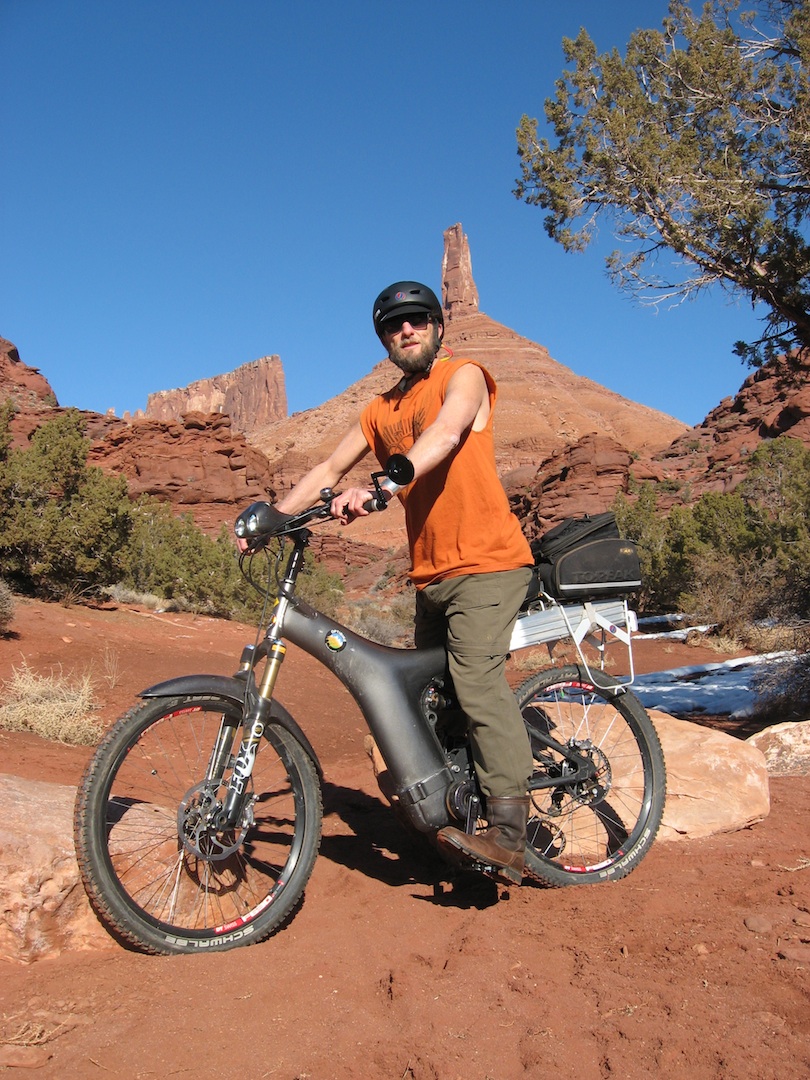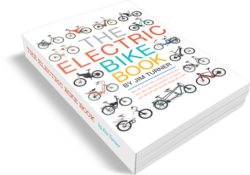Electric bikes can change your life!
But they can also be a waste of money if the wrong bike is purchased for your needs.
I have seen people lose 50 pounds, eliminate prescription drugs and feel a decade younger when riding an electric bike. You can do this too, but you need to choose the correct electric bike for your needs.
I have also seen people buy bikes that will not climb the hills they need, have the battery go dead half way through their ride and have the bike fall apart after a few months riding.
There are hundreds of choices in the market for electric bikes, and they are not all the same. This short report tells you the 7 biggest mistakes not to make.
Each section includes some questions to ask the E-bike dealer when you are looking at bikes.
This report is a quick and short overview. For additional and more in depth information about each topic we have included links on some pages to other articles and videos.
For a more complete understanding of electric bikes, you can download best selling “The Electric Bike Book” here for free!

Mistake #1
Believing the Range Estimates of the Manufacturer
Unlike the car industry there is no “MPG standard” which all electric bikes are tested to.
The mileage claims by each E-bike manufacturer are just their own claims. When a company states a range of an E-bike, it is easy to alter the range. In fact an E-bike can have an infinite range if you do all the pedaling.
Your weight, the terrain and most importantly the speed affects the range of an E-bike. The best way to compare E-bike range is by comparing the battery energy in Kilowatt hours (KWh).
If two E-bikes have similar drive systems, such as mid drives with similar power, the one with the bigger battery will go further. If the battery is twice the size, it will go twice as far.
More Resources: https://optibike.com/electric-bike-basics/
Questions to ask when buying a bike:
- At what speed was the range estimate done?
- How much was the rider pedaling?
- What was the terrain?
Mistake #2
Buying a Hub Motor Bike to Climb Hills
There are two main types of electric bike drive systems:
Hub motors and Mid Drive motors.
While hub motors are simple and work fine on flat ground, they are unable to climb hills efficiently like mid drive systems do.
The reason is that the mid drive systems use the gears of the bicycle in parallel with the rider to maintain optimum efficiency on flat ground and steep hills.
A hub motor is like a fixed gear bike and only optimized for one speed, so they tend to be inefficient climbing hills and can often overheat.
More Resources: https://www.youtube.com/watch?v=KL7tTUZCFDs
Questions to ask when buying a bike:
- Does this bike have a hub or mid drive motor?
- What is the continuous power of the motor?
- What is the peak torque of the motor?
Mistake #3
Not Understanding How to Compare Batteries
The battery is like the gas tank in your car.
Ultimately, the range of two bikes with the same type of motor, such as a mid drive is determined by the size of the battery in Watt Hours (Wh).
A battery is described by both its Voltage (V) and Amp Hours (Ah).
Most E-bike batteries come in either 36 or 48 Volts and are between 8 and 30 Amp Hours.
The Watt Hours are equal to the Voltage times the Amp Hours.
Watt Hours = Voltage * Amp Hours.
If you have a 36 V 10 Ah battery, it has 360 Wh of energy. Which means if you have a bike with a 360W motor it will run for 1 Hour.
More watt hours means longer distance, just like a larger fuel tank in a car.
More Resources: https://www.youtube.com/watch?v=xkuJzOV9VFs
Questions to ask when buying a bike:
- What is the Watt Hours of the battery?
- How much does the battery weigh?
- What is the Watts Hours per kg of the battery?
Get a Free Book!

The Electric Bike Book by Jim Turner teaches you the Basics of Electric Bikes
Just Sign Up For Our Newsletter to get Your Free Copy
- Different types of electric bikes, comparing hub motors vs mid-drive motors.
- The easy way to compare the range of electric bikes.
- Why all batteries are not created equal.
- Fitness and how you can still get plenty of exercise on an ebike.
- How people lost 80 pounds and eliminated prescription drugs.
Join our newsletter for exclusive insights and special offers on Americas finest electric bikes. Get first look at new models, exclusive discounts, and see behind-the-scenes of our Colorado craftsmanship.
You'll also receive a free download of The Electric Bike Book by Jim Turner.
Mistake #4
Believing the Manufacturers Speed Claims
There is no government standard for claims of top speed made by electric bike manufacturers.
It is possible to ride a bike at very high speeds, such is done in the Tour de France, without a motor.
For top speed stated on an E-bike to be meaningful it must be maintained for the entire battery charge, not for a short distance. Many laws also limit E-bikes to 20 or 28 MPH top speed.
Questions to ask when buying a bike:
- How was the top speed determined?
- Was the speed sustained for the entire battery charge?
- Will a rider like me be able to easily do the rated top speed?
Mistake #5
Buying the same bike for you and your spouse
You and your spouse may not need the same electric bike to ride together.
Someone that is lighter does not need as much power or torque to climb the same hill. Women tend to prefer smaller bikes and bikes with smoother power.
You are probably different heights and may have different physical limitations that require a different type of frame or even entirely different bike.
You also may have different expectations on the type of terrain you will ride your bikes on and the length of the trips you will make.
Questions to ask when buying a bike:
- What is you and your partners weight?
- Do you want speed and exhilaration or a casual ride?
- Does one partner want to go on longer trips?
Mistake #6
Not understanding the difference in quality
There is a great range of quality in bicycle components, even with the same brand name.
You can buy a suspension front fork for $80 or $2100. You can buy a rear gear cassette for $15 or $450. Many of the specifications may look the same, but the quality and performance can vary greatly.
Lower grade components will not perform as well and will wear out sooner.
So don’t just shop by brand, such as Shimano, but also look at what level of components are used.
There is also a great deal of Knock Off components of major brands made in China. These components may have the brand name on them, but are not made by the company. These knock offs are often of inferior quality and do not have the testing or guarantee of the company.
Questions to ask when buying a bike:
- What model line of components are used?
- Are the components certified not be knock offs?
Mistake #7
Not having a clear understanding of how you will ride your E-Bike
A clear understanding of how you will ride your E-bike is important to buy the right one.
Some questions to consider:
- How far do you plan to travel on a trip?
- What average speed do you want to travel at?
- Will you ride with other E-bikes, alone, or with conventional cyclists?
- What is the steepness of the hills and how long are they?
- Will you be riding on dirt or road?
- How fast do you need your bike to charge?
- Do you have back or neck issues that require upright riding position?
- Do you have joint issues that require special consideration in frame design and riding position?
More Resources: https://optibike.com/choose-the-perfect-e-bike/

